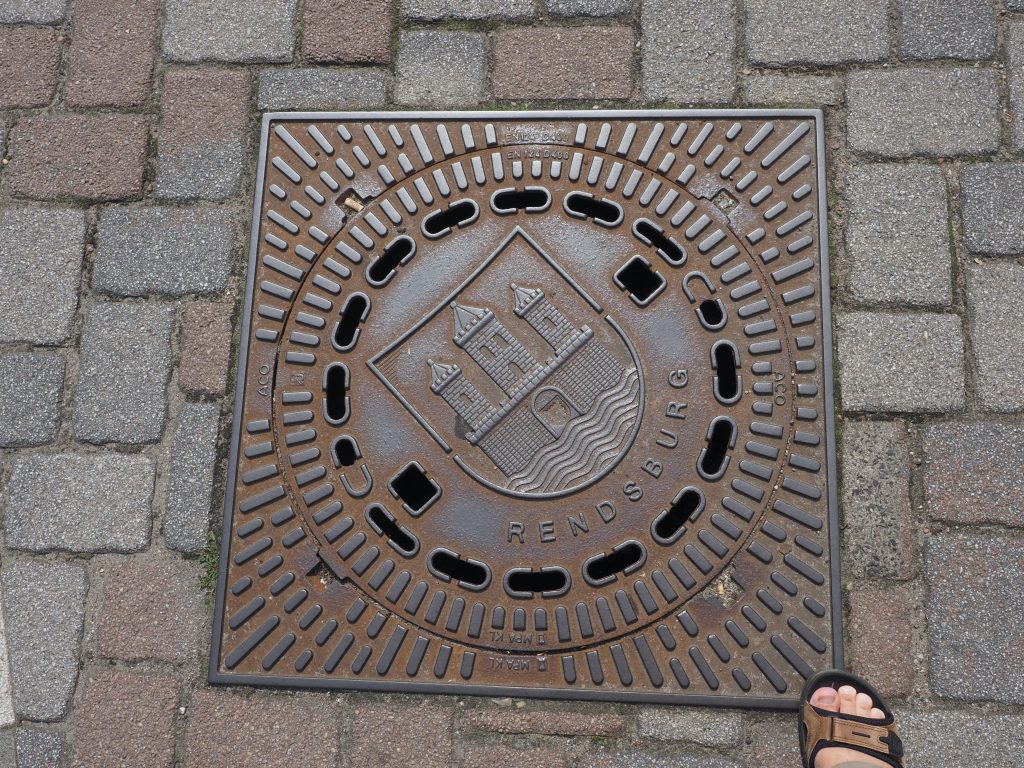
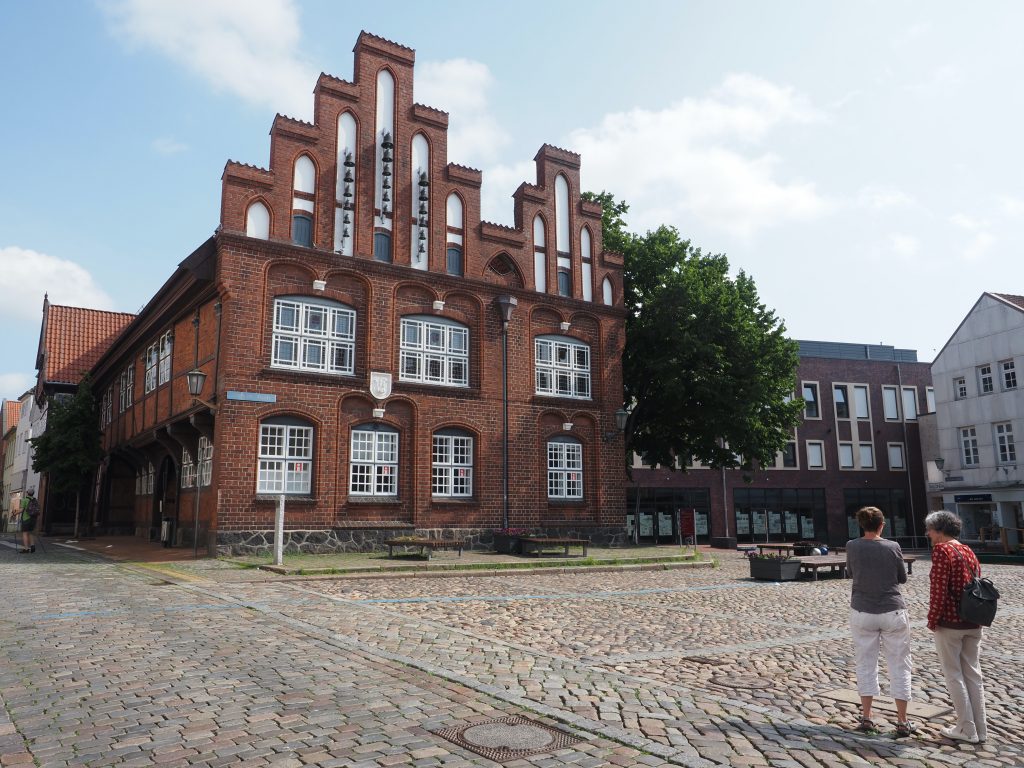
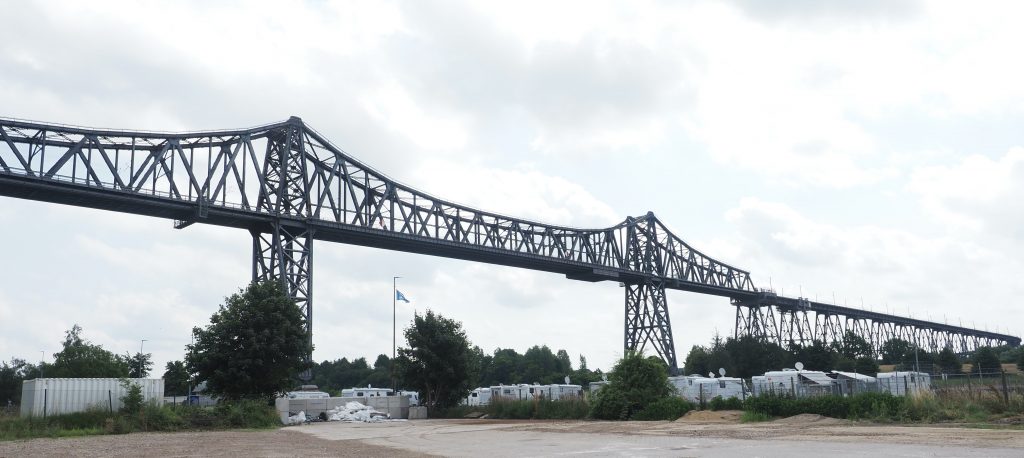
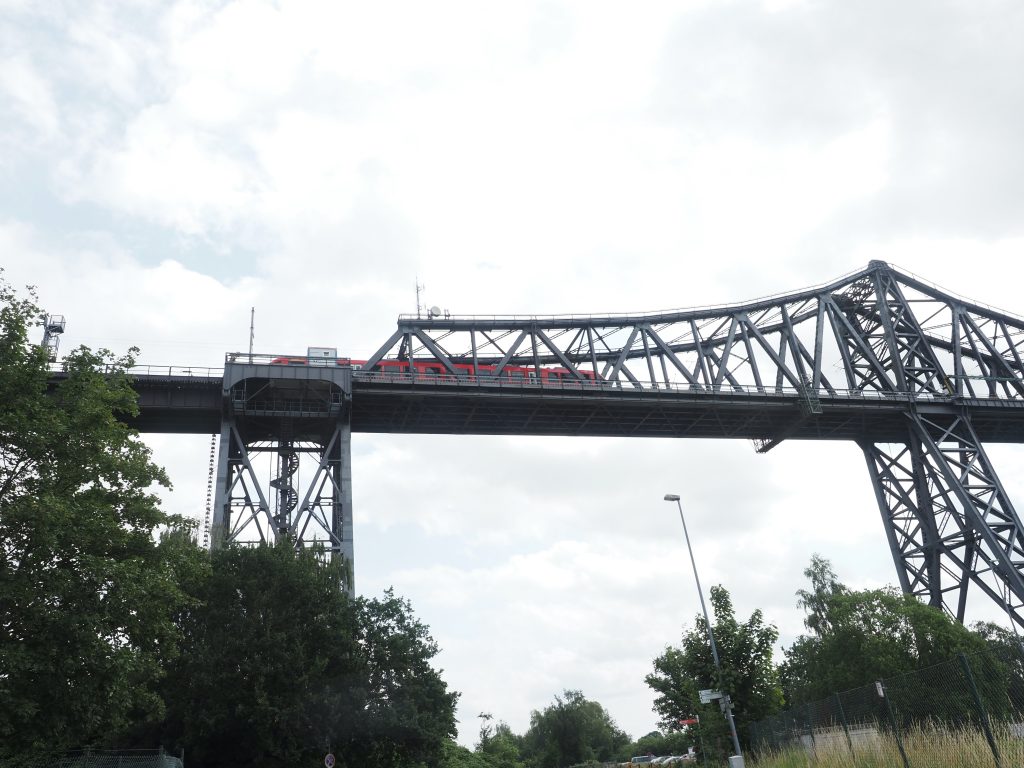
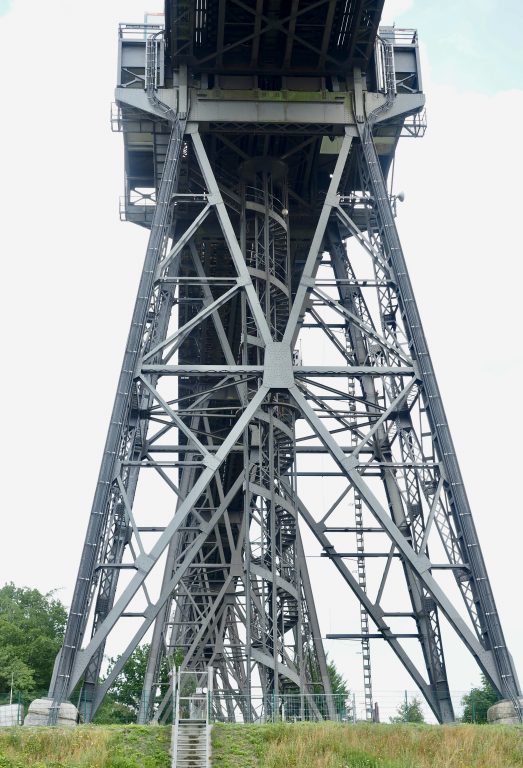
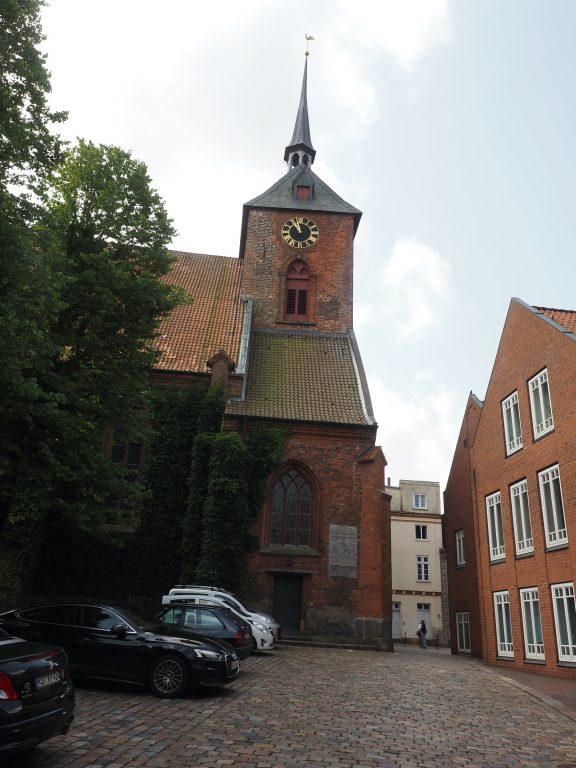
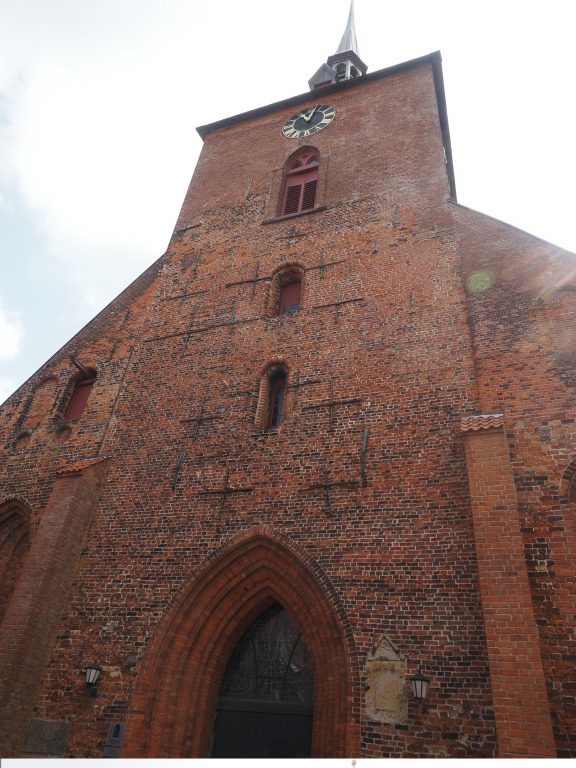
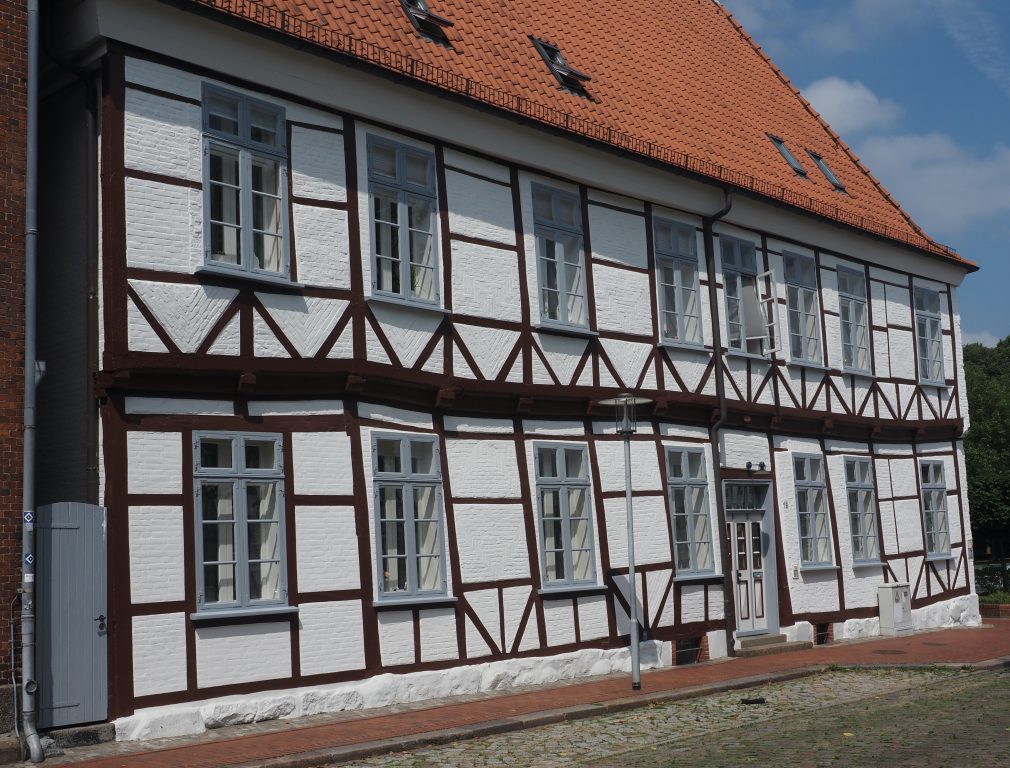
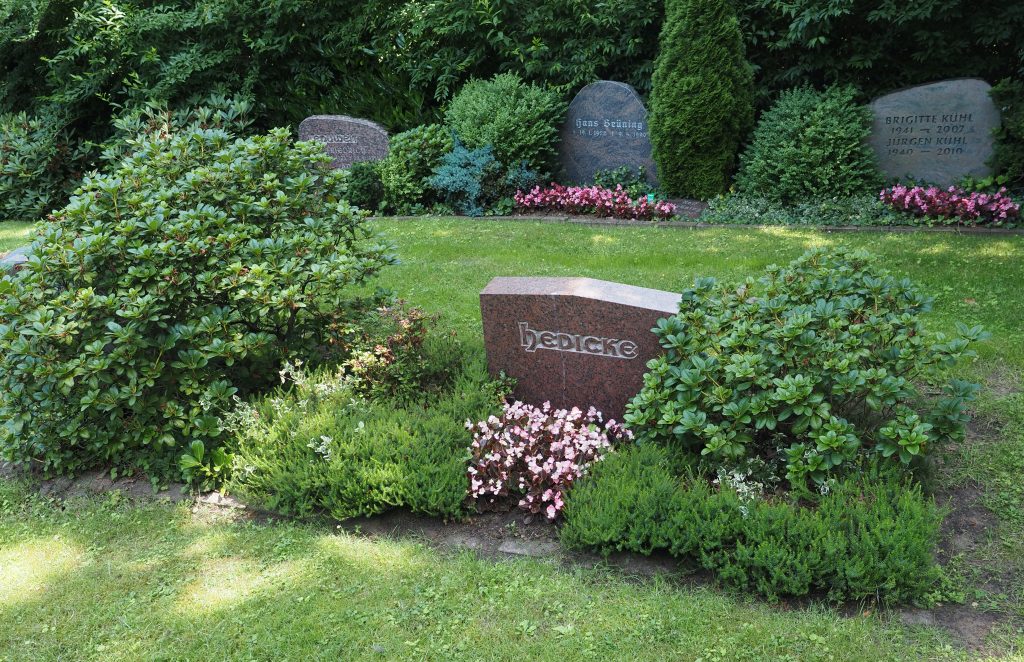
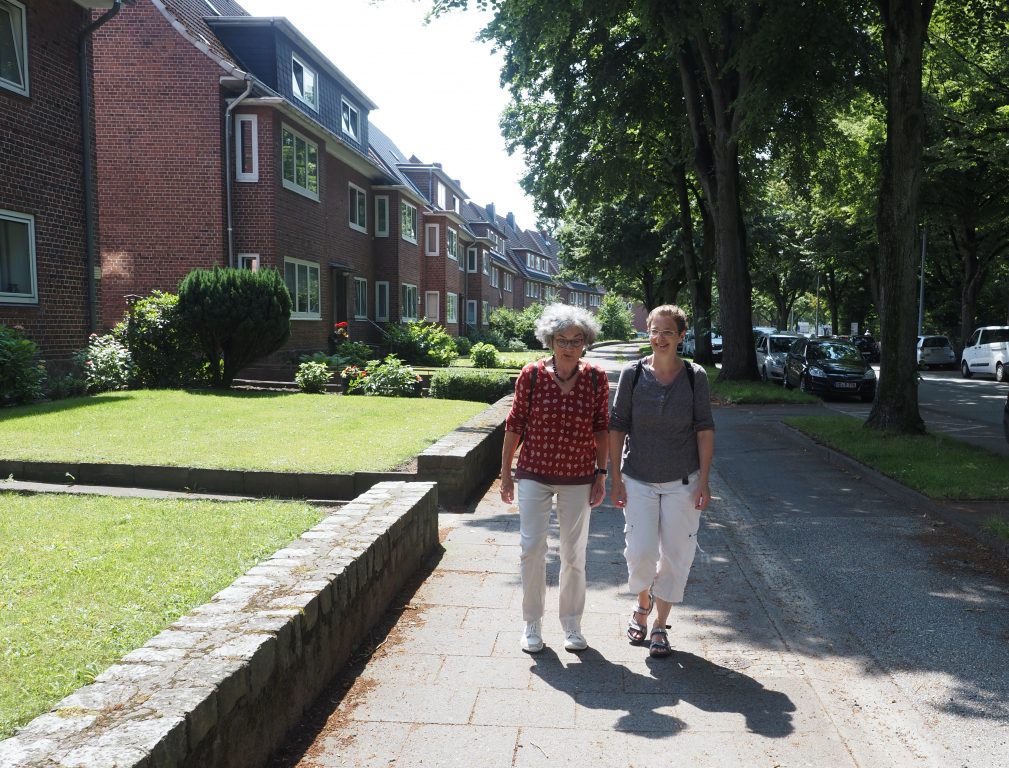
Today (Sunday) was a SUPER eventful day, even though it was also “departure day” from my sister’s. I did get up a little after six and then tried out one more route for running, which included both the little loop through the woods we took last night, and the longer road around the village we had taken on Friday afternoon. Michael and Judith made their way over to the house and we had breakfast between 8 and 9, much like yesterday, and left shortly afterwards to drive to Rendsburg, a city of about 28,000 people that is about 45 minutes from Judith and Michael’s village. Rendsburg is, on its surface, nothing special, just a smallish northern German on the Kiel Canal, which connects the Baltic to the Atlantic, but there are a couple of unusual things about it. First, it was my mom’s hometown when she was an adolescent, and my grandparents lived there until their deaths, so I used to visit all the time. Second, it has a wonky national history, because kept switching between being Danish, at times even a seat of the Danish kings, and being German (sometimes part of Schleswig and sometimes of Holstein) and it then played a role in the Danish-Prussian War in the 1860s, which ended with Rendsburg becoming part of the kingdom of Prussia and then of the German Empire in 1870. And third, it boasts the longest railroad bridge in all of Germany, which crosses the Kiel Canal in such a way that it VERY SLOWLY gains height, far above the simple family homes below. I’ll let Wikipedia give you the kind of information I always want to make sure I have:
“The bridge was erected between 1911 and 1913 to a design by Friedrich Voss (1872–1953) and replaced the earlier swing bridges. The steel viaduct has a length of 2,486 metres (8,156 ft) and is supplemented by embankments that bring the overall length of the structure to about 7.5 kilometres (4.7 mi). The cantilever main bridge is 317 metres (1,040 ft) long, has a main span of 140 metres (460 ft) and provides a clearance of 42 metres (138 ft) above the canal’s water level. To serve Rendsburg station, situated at ground level only a couple of hundred metres from the main bridge, the railway line is routed through a large 360-degree loop on the north bank of the canal (“Rendsburg Loop”).”
I remember that it was always awe-inspiring to take the train to Rendsburg and experience the loop as a kid, and in 2014, Mark, Kai, and I took it when we came back from a weekend in Copenhagen. But now Mark got to see it from the ground up! Sadly, not the unique “hovering ferry” across the canal, which operated via cogs attached to the bridge for over a century, because it was damaged by a large ship in a dramatic accident in 2015, and has not yet been replaced.
We spent the morning and part of the afternoon walking all over town, partly guided by Michael and Judith, who have explored its walking paths and vistas many times, and partly guided by mother, who pointed to key spots of her childhood and added to what we knew about her hometown, to which she came by rather complicated routes.
My mom’s own mother, my grandmother Charlotte (Grossmutti), was born in Rendsburg, but had moved far away, to East Prussia and then to Saxony, with my grandfather Helmut Hedicke (Grossvati), her second husband. Right after the Second World War, when my mother was barely three years old, her older sisters Ute and Karin (8 and 14) and her younger sister Frauke, a baby (born in 1945), Charlotte made her way across Germany from Saxony in the chaos of the immediate post-war (destroyed railroad tracks and roads and telephone lines, bombed-out cities, separated families, fleeing German soldiers and civilians from all directions, allied troops taking over, etc. etc.), to join her mother and her younger sister with her own family in Rendsburg. This had been the agreed-upon place for everyone to meet if they were scattered, and she was reunited there with her husband, who had been in the military and had already made his way here by the time she arrived. For a while, the two young families (Charlotte and her husband Helmut, with two of the kids–the other two staying with other friends–and her sister Käthe with her husband Max and a baby, Dörte) and the grandma all lived in a small apartment in downtown Rendsburg near St. Mary’s Church (Imke showed us where the house had been, although it is no longer there). Of course, that got way too crowded and stressful, but there were no apartments for rent anywhere right after the war, even though there had been little war damage in Rendsburg.
Eventually, my mom’s family managed to rent an acquaintance’s cabin on the very outskirts of town, in a non-incorporated location called Steenhoop (stone heap) in the woods between Sorgwohlt and Lohe. Karin was apprenticed to a weaver and did not join them–she was to move away shortly afterwards–but the other 5 family members ended up living for what turned out to be 10 years, until 1956, in a cabin that had no electricity, a hand pump for water (cold, of course) and an outhouse, with no paved road nearby. When my mom was an elementary student, she had to walk quite far to the village school in the village of Sorgwohlt and later, she took a bus to high school in town to which she also had to walk a couple of kilometers. She showed us the monument to some Rendsburg citizen where she’d wait for the bus to go home every day after studying Latin and Greek at the “Klassische Gymnasium,” where there were only two girls during her entire 9 years there, since it had originally been a boy’s school. (The classical track had been her dad’s suggestion, because he could see how smart my mother was, and wanted her to become a doctor or scholar; her mom suggested that before she went off to college, she add a course on etiquette, a sort of mini finishing school, so that she’d learn to be more ladylike and elegant.) When she graduated in 1962, the family had finally established itself in a very modest two-bedroom apartment in brand-new apartment buildings, and had lived there for five years, first with three younger sisters and then just Imke and her younger sister Frauke sharing a room. Imke commuted for a semester to study psychology at the nearby University of Kiel, and then switched to far-away Göttingen (where she met my dad and also switched to library science, partly in order not to be in direct rivalry with my dad, also a psychology student, and partly because she knew that would make her fairly employable).
I know much of this family history, but without much an anchor in space beyond the apartment, which I remember from many, many family visits as my grandparents’ home, where we would all cram into a smallish living/dining room for family reunions, have coffee and cake or Sunday dinners, and then go for a walk along the Kiel Canal to watch the big ships go by. There were many parts of the city that we saw today that I had never been to, and I learned a lot about the town, and also about family history: Imke showed me the church where she was confirmed into the Lutheran faith (Christ Church), and the one where she was part of the choir (St. Mary’s Church–also Lutheran). And there were even some sites that Judith and Michael took us to but that Imke had no memory of seeing, since they were not part of her regular routes and hangouts, for example, military barracks and exercise grounds that are now being converted into city administration buildings and apartments.
The old part of the city and the various parks we traversed (including along the canal) are beautiful, with several large plazas and quite a lot of late 19th century and early 20th century homes, often with shops on the ground floor, mostly brick, occasionally alternating with older, charmingly crooked tudor-frame buildings. Walking underneath the high iron bridge for the railroad was impressive, the little brick homes below very cute. We also sat at the canal in a cafe and had ice cream and iced coffee instead of lunch, but because it was Sunday, there was not much ship traffic. We also looked at the outside of the apartment building where they all lived from 1956 on (my grandparents never moved), and we visited the cemetery where my grandparents are buried (see more below *). I was there for my grandmother’s funeral at age 77 in 1988, but by the time my grandfather died at 86 in 1996, I already lived in the States and did not come for the funeral–I had a three-month old, Kati, who was still entered into the hand-written family tree that my grandfather kept updating, three months before he himself died, with my mom by his side for the last 10 days of his life. Imke also showed me the hospice where my grandfather died; she felt very lucky that she could be with him during the last 10 days of his life, and that the stationary hospice, built just that very year, 1996, offered him such a peaceful place for his last days. She started training as a hospice volunteer shortly afterward, and has volunteered in the Osnabrück hospice ever since.
With these stories on my and my mom’s mind, and many others being revisited, with my sister and me having very different memories of Rendsburg, we walked around quite a lot–and I got the sense I had really seen the whole town when we left around 2:15 pm and went back home for coffee and strawberry “Torte” (not much different from shortcake–a sponge cake loaded with fresh strawberries), which we had with ice cream. We rested a bit at home and Imke, Judith, and I (later also joined by Michael) went for one more little walk before it was time for us to leave. Judith drove us back to Neumünster train station, and while Imke took the train all the way home to Osnabrück, Mark and I got off at Hamburg main station, where our friend Peter picked us up. His wife, my best friend from high school, Andrea, had the traditional Abendbrot waiting for us, and we talked late into the night (for us, anyway: after 11!) to catch up.
* Footnote on cemeteries: We learned that German grave plots are not bought, as in the States, but typically rented for a specific time (like 30 years or 50 years) and my grandparents’ gravesite, marked by a stone that just has the last name HEDICKE on it, has “expired,” so my mom decided to let it lapse, and recently visited it for what she thought was the last time. But we took one more look today, and everyone is perfectly fine with the gravesite being “recycled.” Unlike in the US, there are no concrete vaults in regular graves, and the coffins are designed to decay, along with the remains, so there is no grisly removal process. But my friend Andrea was able to tell me that if the remains are not completely gone, they will be placed in a little side portion of the plot, rather than removed. It is fascinating how different the “rules” about death and burial are in different countries.